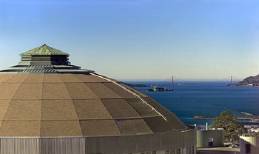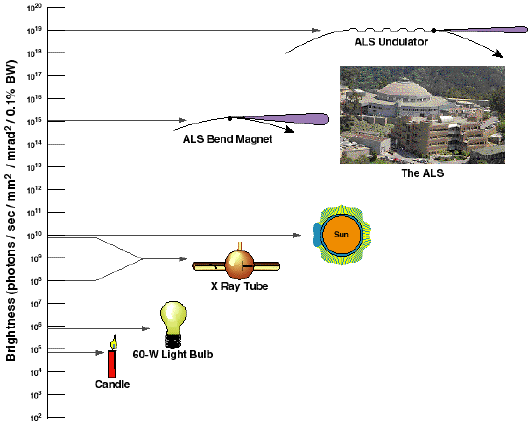
ALS Quick Facts
The ALS Site
 |
The original building, situated in the East Bay hills overlooking San Francisco Bay, was completed in 1942. Designed by Arthur Brown, Jr. (designer of the Coit Tower in San Francisco), the domed structure was built to house Berkeley Lab's namesake E. O. Lawrence's 184-inch cyclotron, an advanced version of his first cyclotron for which he received the Nobel Prize in Physics in 1939. Today, the expanded building houses the Advanced Light Source (ALS), a third-generation synchrotron and national user facility that attracts scientists from around the world. |
Funding Agency
U.S. Department of Energy, Office of Basic Energy Sciences
- Construction Costs: $ 99.5 million
- Construction Started: 1987
- Construction Completed: March 1993
- Facility Dedicated: October 22, 1993
Total ALS Staff
185
Visiting Researchers/Users
1200+ per year and growing
How the ALS Works
Electrons traveling at nearly the speed of light, when forced into a circular path by magnets, emit bright ultraviolet and x-ray light that shines down beamlines to experiment endstations.
- Nature of Particles in the Storage Ring: Electrons with a nominal energy of 1.9 GeV
- Size of Electron Beam: ~ 0.20 mm x 0.02 mm (about the width of a human hair)
- Operating Beamlines: 27 plus the Beam Test Facility
- Possible Beamlines: 60
How Bright Is It?
The ALS produces light in the x-ray region of the electromagnetic spectrum that is one billion times brighter than the sun. This extraordinary tool offers unprecedented opportunities for state-of-the art research in materials science, biology, chemistry, physics, and the environmental sciences. Ongoing research topics include the electronic structure of matter, protein crystallography, ozone photochemistry, x-ray microscopy of biological samples, and optics testing.
